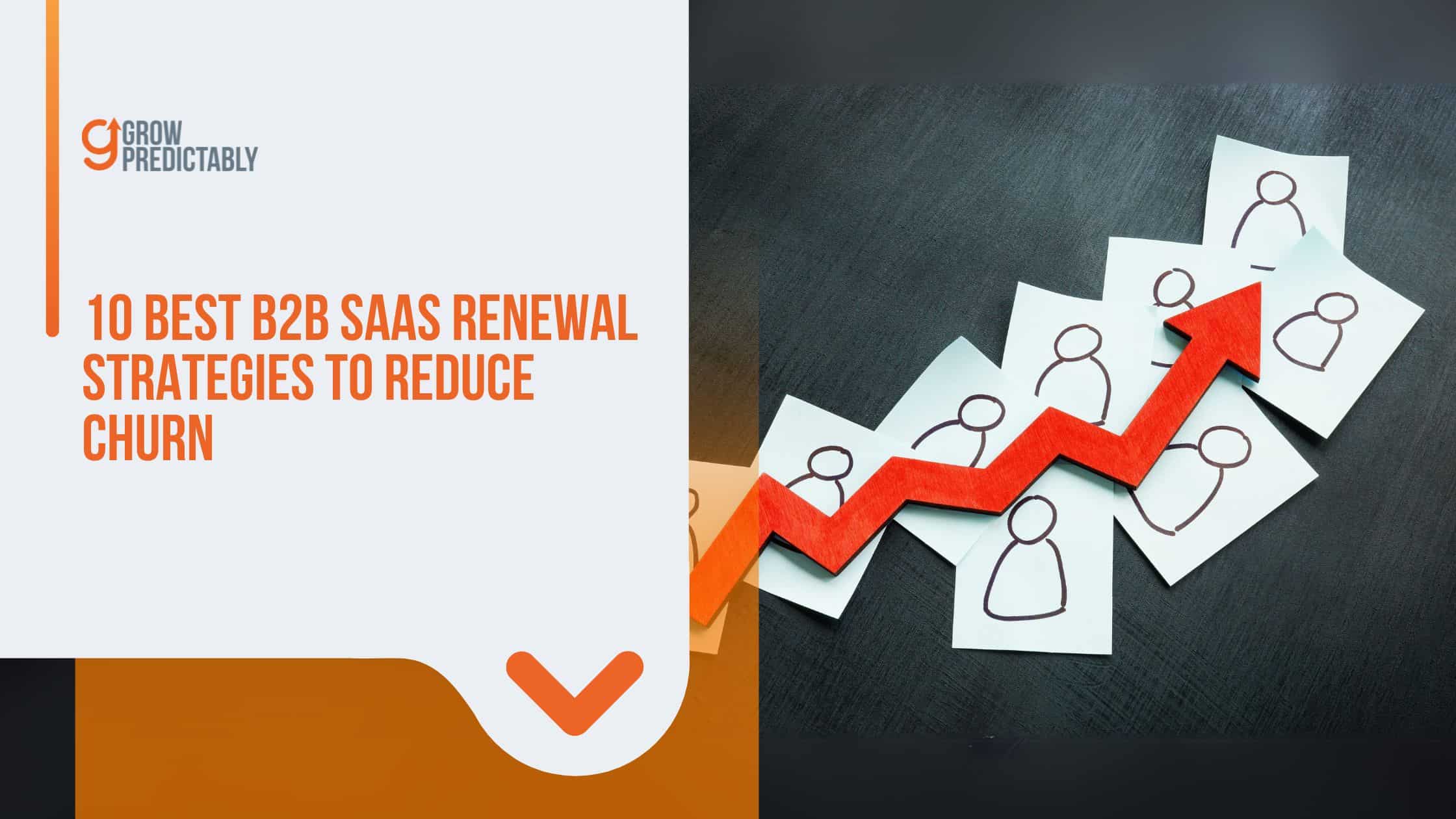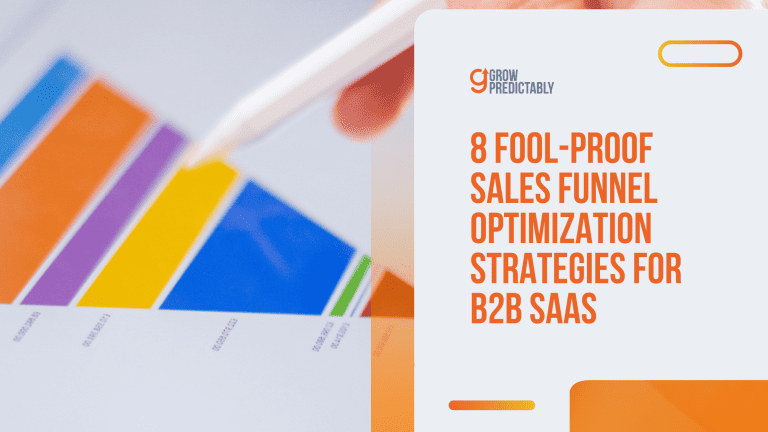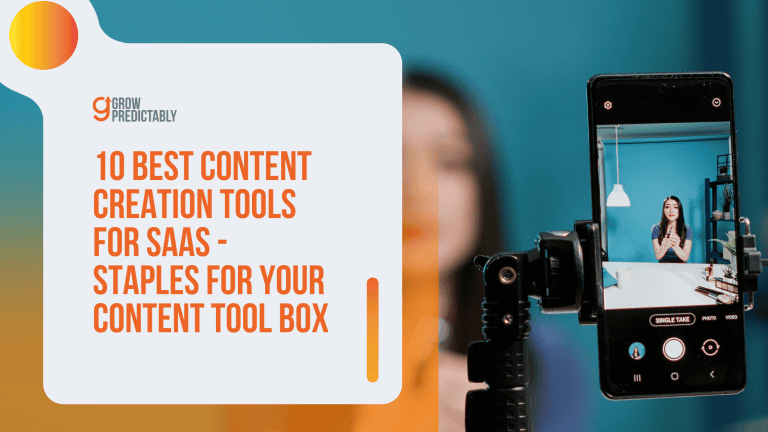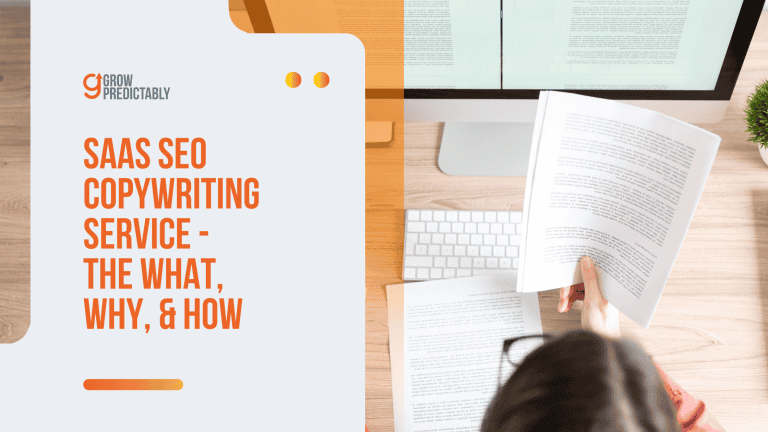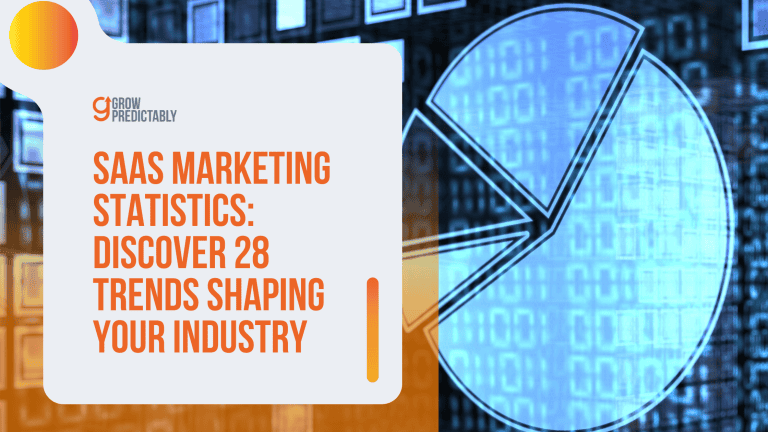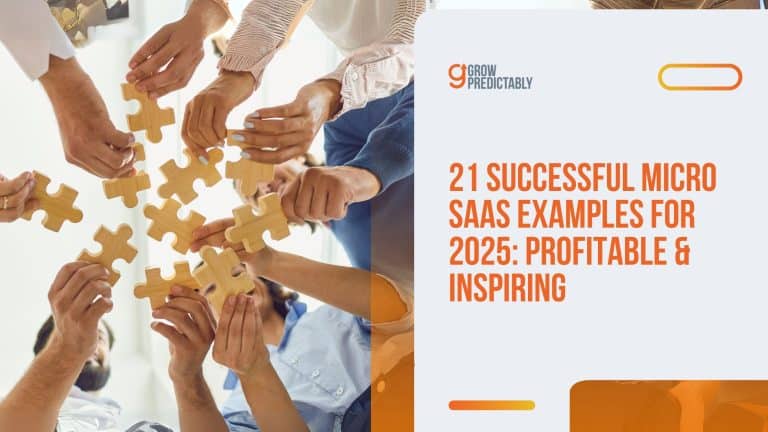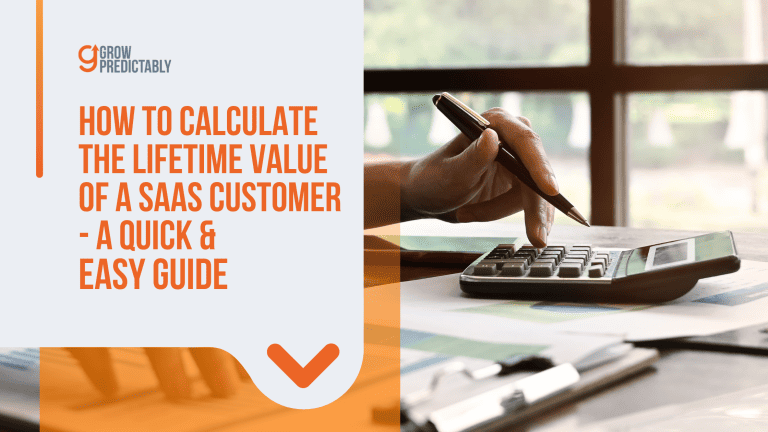10 Best B2B SaaS Renewal Strategies to Reduce Churn
If you’re putting 80% of your energy into acquisition, you’re already losing.
Renewals are where the real revenue lies in B2B SaaS.
Here’s the thing: keeping a customer costs 5-7x less than getting a new one.
So why is no one teaching SaaS companies how to dominate at renewals?
Let’s dive in—we’ll show you ten B2B SaaS renewal strategies to flip the script on churn and make renewals automatic.
Understanding the Importance of B2B SaaS Renewals
Your renewals aren’t just numbers on a spreadsheet – they’re the backbone of your entire SaaS operation.
When you look at the cold, hard truth of SaaS economics, research from Bain & Company shows that a 5% increase in customer retention can multiply profits by 25-95%.
This isn’t just another metric.
It’s the difference between scaling exponentially and fighting for survival in today’s brutal SaaS landscape, where fostering customer loyalty is essential for sustained business growth.
The Lifeblood of SaaS Business
Your recurring revenue is the engine that powers everything else in your business.
Every renewal represents a customer validating your product’s worth with their wallet. Customer renewals are crucial for maintaining customer engagement and delivering consistent value to prevent churn.
Consider this reality: mature SaaS companies generate 70-80% of their annual recurring revenue (ARR) from existing customers – whether through renewals or expansions.
That’s not just survival money – it’s growth fuel.
- Predictable Revenue Streams: Each renewal solidifies your financial foundation, giving you the confidence to make bold moves in product development and market expansion
- Compound Growth Effect: Retained customers become your greatest asset multiplier – they upgrade more, buy add-ons, and become vocal advocates
- Market Validation: Strong renewal rates signal to investors and competitors that you’ve built something customers genuinely need and value
- Operational Efficiency: Long-term customers require less support, understand your product better, and provide invaluable feedback for improvement
Cost of Acquisition vs. Retention
The mathematics of customer retention are brutal and unforgiving.
This isn’t just about saving money – it’s about intelligent capital allocation.
Every dollar spent on retention typically generates a significantly higher ROI than acquisition spending.
Think about the compounding inefficiency: You spend massive resources acquiring customers, only to watch them walk away because you didn’t invest in their success.
Your retention program isn’t a cost center – it’s your profit maximizer.

When you nail retention, you’re not just keeping revenue – you’re building an exponential growth machine where each customer becomes more valuable over time.
Regularly collecting customer feedback can identify issues in the renewal process, allowing you to make informed, data-driven decisions that align with customer needs and expectations.
Your renewal rate isn’t just another KPI – it’s the verdict your customers pass on your product’s value every single day.
Master this, and everything else in your SaaS business becomes exponentially easier. Ignore it, and you’re building on quicksand.
10 Best B2B SaaS Renewal Strategies to Reduce Churn

Your renewal strategy needs to be proactive, data-driven, and value-focused.
These ten strategies aren’t just theoretical – they’re battle-tested approaches that directly impact your bottom line.
1. Proactive Customer Success Management
Success management isn’t a reactive support function – it’s your frontline defense against churn.
Start monitoring usage patterns and engagement metrics at least 90 days before renewal.
Build dedicated success teams that own the complete renewal lifecycle, with a customer success team playing a crucial role in managing customer relationships and enhancing satisfaction.
- Establish weekly health scores tracking key usage metrics
- Create custom success plans with measurable milestones
- Deploy automated alerts for engagement drops below 60%
- Schedule monthly executive check-ins with key stakeholders
2. Strategic Early Renewal Conversations
Waiting until the last month for renewal discussions is a recipe for disaster in the SaaS renewal process.
Begin value-focused conversations 3-6 months before contract end dates.
- Document quarterly business impact reviews
- Map product roadmap to customer’s strategic initiatives
- Schedule executive alignment sessions at the 6-month mark
- Create renewal forecast models based on engagement data
3. Data-Driven Value Demonstration
Transform abstract benefits into concrete numbers that resonate with decision-makers by incorporating effective SaaS renewal management strategies.
Build comprehensive ROI analysis showing direct business impact.
- Track and report monthly efficiency gains
- Calculate cost savings from workflow automation
- Measure revenue impact through attribution modeling
- Document resource optimization metrics
4. Tiered Renewal Incentives
Structure your renewal offers to reward commitment and growth.
Design programs that make longer-term contracts more attractive.
- Offer 15% savings on 2-year commitments
- Include premium support tiers for early renewals
- Provide additional user licenses for multi-year deals
- Create exclusive feature access for long-term customers
5. Automated Risk Detection System
Deploy intelligent monitoring systems that identify customers at risk of churning by catching churn signals before they become problems.
Build early warning systems based on usage patterns.
- Monitor 15+ key usage indicators daily
- Set up alerts for 20% drops in core feature usage
- Track NPS scores across user segments
- Analyze support ticket sentiment trends
6. Personalized Product Education
Custom training programs, as part of a comprehensive customer success strategy, dramatically increase product adoption and perceived value.
Create role-specific education paths.
- Develop 12+ role-based certification tracks
- Schedule monthly advanced feature workshops
- Create custom onboarding for new team members
- Offer quarterly best practices sessions
7. Strategic Account Planning
Build detailed growth roadmaps aligned with the SaaS business model and customer objectives.
Create clear expansion paths that deliver increasing value.
- Conduct quarterly business reviews
- Create 18-month growth forecasts
- Map feature releases to customer needs
- Schedule bi-annual strategy sessions
8. Multi-level Relationship Building
Develop connections throughout the customer organization by leveraging customer success teams.
Create champions at every level.
- Connect with 5+ stakeholders per account
- Host quarterly user group meetings
- Organize executive roundtables
- Create customer advisory boards
9. Flexible Contract Restructuring
Adapt your contracts to changing business needs.
Show flexibility while maintaining value.
- Offer 3+ pricing model options
- Create usage-based billing alternatives
- Provide seasonal scaling options
- Design module-based licensing
10. Customer Advocacy Program
Transform satisfied customers into active promoters for your SaaS businesses.
Build programs that reward advocacy.
- Develop 4-tier advocacy program
- Offer speaking opportunities at industry events
- Create case study incentive programs
- Establish customer mentor networks
Each strategy builds upon the others, creating a comprehensive renewal system.
The key is consistent execution and measurement, tracking the impact of each initiative on your renewal rates and customer lifetime value.
Renewals in the Customer Value Journey
Traditional customer journey models often follow a simplistic path: Awareness → Consideration → Purchase → Support.
While this linear progression helps track basic customer movement, it falls short for B2B SaaS companies where success depends on continuous value delivery and relationship deepening.
Enhancing the customer experience can reduce friction points in the renewal process, facilitate smoother transitions, and foster customer retention by making interactions more personalized and valuable.
These conventional models typically end at purchase or basic support, missing the critical stages of expansion and advocacy that drive sustainable SaaS growth.
The Customer Value Journey (CVJ) framework, developed by DigitalMarketer, transforms this limited view into a comprehensive system that directly addresses the unique challenges of B2B SaaS.
Instead of treating the customer relationship as a finite transaction, CVJ maps eight distinct stages: Awareness, Engagement, Subscribe, Convert, Excite, Ascend, Advocate, and Promote.
What makes CVJ particularly powerful for B2B SaaS renewals:
- Relationship Focus: Unlike traditional models focused on one-time purchases, CVJ emphasizes building lasting relationships through continuous value delivery
- Value Ascension: The framework explicitly includes paths for customers to expand their engagement and investment over time
- Advocacy Integration: CVJ recognizes that satisfied customers become powerful growth engines through referrals and testimonials
- Systematic Progression: Each stage builds upon the previous one, creating a natural flow toward higher-value relationships
The CVJ framework helps capture this value by providing a structured approach to customer relationship development.
The Awareness Stage: Building Trust Through Success Stories
In today’s competitive SaaS landscape, prospects aren’t just evaluating your features – they’re looking for proof of sustained value delivery.
Your renewal rates serve as powerful social proof, demonstrating that customers find ongoing value in your solution.
When customers see others succeeding long-term with your platform, it dramatically reduces their perceived risk.
- Case studies showcasing multi-year customer relationships and expanding usage
- Transparent renewal rate metrics that demonstrate customer satisfaction
- Customer testimonials highlighting long-term ROI and partnership value
- Success metrics showing compound value delivery over time
The Engagement & Subscribe Stages: Demonstrating Long-term Value
The moment prospects start engaging with your content and sales team, you need to paint a clear picture of their future success.
This isn’t about quick wins – it’s about establishing the foundation for a lasting partnership.
Your engagement strategy should consistently reinforce the compounding benefits of staying with your solution.
- ROI calculators showing value accumulation over multiple renewal cycles
- Customer journey maps highlighting key milestones across multiple years
- Success planning frameworks that extend beyond initial implementation
- Clear upgrade paths showing how value scales with deeper platform adoption
The Convert & Excite Stages: Setting the Stage for Renewal
The seeds of renewal are planted in your conversion and early success delivery, shaping the customer’s experience from the very beginning.
This critical period shapes the customer’s entire perception of your solution.
Beyond basic onboarding, you need to demonstrate clear progress toward their strategic objectives.
- Milestone-based onboarding focused on quick time-to-value
- Regular business reviews measuring progress against success criteria
- Proactive feature education aligned with customer maturity
- Early warning systems to identify and address adoption challenges
The Ascend & Advocate Stages: Building Champions
Your most powerful renewal engine comes from customers who’ve experienced transformative results with your platform.
These advocates become internal champions, driving expanded usage and defending renewals against competitors.
- Structured advocacy programs rewarding long-term customers
- Executive sponsorship cultivation through strategic alignment
- Customer advisory boards shaping product direction
- Peer networking opportunities building community value
The Promote Stage: Turning Renewals into Revenue Multipliers
The promote stage represents the pinnacle of customer evolution – where satisfied customers become active revenue generators for your SaaS platform.
This goes beyond mere advocacy to creating tangible business impact through direct promotion.
- Long-term customers transition into formal partnership roles, driving implementations and integrations
- Customers actively participate in co-marketing initiatives, driving qualified referrals
- Customers contribute detailed technical content, implementation guides, and integration documentation
- Renewed customers become conference speakers and panel participants, amplifying your market presence
A key distinction of the promote stage is the transition from passive satisfaction to active revenue contribution.
When customers reach this stage, renewals become automatic because their success is directly tied to your platform’s growth.
4 Core Metrics That Matter for B2B SaaS Success
Every successful B2B SaaS renewal strategy begins with mastering the right metrics.
Here’s your tactical guide to the metrics that directly impact your renewal success.
1. Monthly Recurring Revenue (MRR)
Your MRR tells the story of your business health and renewal effectiveness.
Track these components religiously:
- Core MRR Components
- New MRR from first-time customers
- Expansion MRR from existing customer upgrades
- Contraction MRR from downgrades
- Churned MRR from cancellations
- Net New MRR (total movement up or down)
- Segmentation Strategy
- Break down by customer size (Enterprise/Mid-market/SMB)
- Track by industry vertical to spot trends
- Monitor by product line or feature set
- Analyze by customer age cohorts
- Monthly Movement Analysis
- Calculate month-over-month growth rates
- Identify seasonal patterns
- Track velocity of changes
- Document major customer events impacting MRR
2. Customer Lifetime Value (CLV)
Understanding your CLV helps optimize acquisition and retention investments:
- Revenue Analysis
- Average revenue per account (ARPA)
- Upgrade frequency and value
- Contract length impact on value
- Feature adoption correlation to revenue
- Cost Structure
- Customer acquisition cost (CAC) by channel
- Onboarding and implementation costs
- Ongoing support and success costs
- Infrastructure costs per customer
- Cohort Tracking
- Track CLV by acquisition channel
- Monitor CLV changes over customer lifetime
- Compare CLV across pricing tiers
- Analyze CLV impact of product features
3. Net Revenue Retention (NRR)
Your NRR is the ultimate health indicator for B2B SaaS:
- Revenue Components
- Starting revenue baseline
- Expansion revenue from upsells
- Contraction from downgrades
- Lost revenue from churn
- Net impact calculation
- Benchmark Analysis
- Industry-specific comparisons
- Growth stage adjustments
- Market segment analysis
- Competitive positioning
- Action Triggers
- Set NRR targets by segment
- Create intervention thresholds
- Define success metrics
- Establish reporting cadence
4. Churn Rate Assessment
Detailed churn analysis prevents future revenue loss:
- Pattern Recognition
- Monthly churn velocity
- Annual renewal impact
- Seasonal variation analysis
- Customer segment patterns
- Segmentation Insights
- Revenue impact by segment
- Feature usage correlation
- Industry-specific patterns
- Team size impact
- Early Warning System
- Login frequency changes
- Feature adoption drops
- Support ticket patterns
- NPS score trends
These metrics form the foundation of your renewal strategy.
Track them consistently, analyze them deeply, and use them to drive specific actions in your customer success and renewal processes.
Remember, the goal isn’t just to collect data – it’s to use these insights to build predictable, scalable renewal systems.
Must-Have Tools for Managing B2B SaaS Renewals
Building an effective renewal management system requires the right tech stack.
While shiny new tools won’t fix broken processes, the right combination of solutions amplifies your team’s ability to drive consistent renewals.
Here’s your comprehensive guide to essential renewal management tools:
1. Customer Relationship Management (CRM)
Your CRM serves as the single source of truth for all customer interactions and renewal data.
- Core Platform Options
- Salesforce: Best for enterprise with complex workflows
- HubSpot: Ideal for mid-market with strong marketing integration
- Zoho CRM: Cost-effective for growing teams
- Microsoft Dynamics: Deep integration with Microsoft stack
- Essential Setup Requirements
- Automated renewal date tracking with 90/60/30 day alerts
- Custom fields for health scores and risk levels
- Renewal pipeline stages with probability weighting
- Integration with billing and subscription management
- Automated task creation for renewal milestones
- Advanced Configuration
- Custom dashboards for renewal forecasting
- Automated account health scoring
- Renewal playbook triggers
- Cross-sell/upsell opportunity tracking
- Customer communication history
2. Customer Success Platforms
Purpose-built tools to proactively manage customer health and drive renewals.
- Platform Selection Guide
- Gainsight: Enterprise-grade with deep analytics
- ChurnZero: Strong automation and scaling features
- ClientSuccess: User-friendly for mid-market
- Planhat: Flexible and customizable
- Critical Features
- Product usage tracking and analysis
- Custom health scoring models
- Early warning systems for churn risk
- Success plan templates and tracking
- QBR automation and reporting
- Integration Requirements
- Real-time data sync with CRM
- Product analytics integration
- Support ticket system connection
- Financial metrics incorporation
- Document storage and sharing
3. Email Automation Tools
Strategic communication tools for consistent renewal engagement.
- Tool Options
- Mailchimp: Great for smaller teams
- Customer.io: Advanced behavioral triggers
- Outreach: Sales-focused automation
- SalesLoft: Enterprise engagement platform
- Implementation Strategy
- Renewal milestone communication sequences
- Usage-based messaging triggers
- Stakeholder-specific content streams
- Success story distribution
- Executive communication templates
- Testing Framework
- A/B testing renewal messaging
- Timing optimization
- Offer variation testing
- Stakeholder persona targeting
- Response rate analysis
4. Analytics and Reporting
Deep insights into product usage and customer health.
- Platform Comparison
- Mixpanel: Strong event tracking
- Amplitude: Advanced user behavior analysis
- Pendo: Good for in-app guidance
- Heap: Automatic event capturing
- Essential Metrics
- Feature adoption tracking
- User engagement scoring
- Session analysis
- Workflow completion rates
- Time-to-value measurement
- Reporting Structure
- Executive dashboards
- Customer health scorecards
- Usage trend analysis
- ROI calculation automation
- Custom renewal readiness reports
Remember: Your tool stack should enable, not replace, human relationships.
The best tools amplify your team’s ability to understand, serve, and retain customers while automating repetitive tasks.
Start with the basics, master them, then expand based on specific needs and growth.
Using the Growth Scorecard to Track B2B SaaS Tool Performance
The Growth Scorecard, a dynamic framework that transforms how B2B SaaS companies measure success, brings systematic precision to tool performance tracking.
Unlike traditional dashboards, it provides weekly insights across each stage of the customer journey, with clear ownership and actionable metrics.
This living document approach means you’re not just collecting data – you’re building a system for continuous improvement.
Green Status (Optimal Performance)
Perfect execution isn’t just hitting metrics – it’s building systematic excellence.
When your tools achieve green status on the Growth Scorecard, you’ll see:
- Mission-Critical Automation
- 100% on-time renewal notification delivery with validation tracking
- Automated health score calculations refreshed every 7 days
- Real-time data synchronization across all platforms
- Zero manual intervention needed for routine tasks
- Complete audit trail of all customer touchpoints
- Data Quality Standards
- Full customer profile completion across all segments
- Accurate subscription and billing data syncing
- Comprehensive usage analytics for all features
- Historical interaction data maintained and accessible
- Cross-platform data consistency verification
Yellow Status (Performance Gaps)
When your tools start showing warning signs on the Growth Scorecard, rapid intervention prevents degradation:
- System Integration Issues
- Manual data updates required more than once per week
- Intermittent sync failures between core platforms
- Delayed health score calculations
- Incomplete data flows between systems
- Non-critical automation failures
- Data Integrity Concerns
- Partially complete customer records
- Inconsistent metadata across platforms
- Delayed usage metric updates
- Missing secondary contact information
- Fragmented communication history
Red Status (Critical Problems)
These issues demand immediate action to prevent renewal impact:
- System Failures
- Missing or incorrect renewal dates in system
- Broken core platform integrations
- Critical automation breakdowns
- Failed data synchronization
- Compromised data integrity
- Process Breakdown
- Manual workarounds becoming standard practice
- Multiple sources of truth emerging
- Key stakeholder notifications failing
- Usage tracking gaps
- Customer engagement blind spots
Using the Growth Scorecard’s color-coded system and weekly tracking cadence, you’ll transform vague tool assessment into precise performance management.
Assign clear ownership for each component and maintain strict escalation protocols for yellow and red status items.
This isn’t just about monitoring – it’s about building a system that drives consistent, measurable improvements in your renewal tech stack.
Building Your B2B SaaS Tech Stack for Maximum Renewal Impact

Your tech stack makes or breaks your renewal operations.
Start with the essentials and scale strategically – your goal is sustainable automation, not tool overload.
1. CRM Foundation
Your CRM is command central for renewal operations:
- System Selection
- Map core renewal workflows before choosing a system
- Evaluate native renewal tracking capabilities
- Assess integration ecosystem depth
- Consider scalability requirements
- Verify customization flexibility
- Implementation Strategy
- Build renewal-specific data architecture
- Create automated renewal pipelines
- Configure early warning triggers
- Establish data hygiene protocols
- Set up comprehensive audit trails
2. Strategic Tool Integration
Add tools methodically to maximize adoption and impact:
- Integration Approach
- Phase new tools quarterly
- Start with highest-impact processes
- Document integration requirements
- Test in isolated environments first
- Create fallback procedures
- Success Measurement
- Track time saved per process
- Monitor data accuracy improvements
- Measure adoption rates weekly
- Calculate ROI per integration
- Assess user satisfaction scores
3. Team Enablement
Technology is only as good as your team’s ability to use it:
- Training Framework
- Role-specific training paths
- Hands-on practice environments
- Clear process documentation
- Regular skill assessments
- Ongoing support channels
- Adoption Monitoring
- Weekly usage metrics review
- Feature utilization tracking
- Efficiency gain measurement
- Feedback collection system
- Continuous improvement cycles
Focus on building a cohesive ecosystem rather than accumulating features.
When properly integrated, these tools can automate up to 80% of manual renewal tasks, freeing your team to focus on high-value customer interactions.
Remember: tool sophistication means nothing without consistent execution and team adoption.
FAQs
Elevate Your Renewal Game Now
Your renewal tech stack isn’t just about having fancy tools – it’s about building a system that consistently delivers value and drives growth.
Let’s get you started:
Next Steps
- Document your current renewal process bottlenecks
- Map out your ideal automated workflow
- Start with one core improvement at a time
- Measure the impact using the Growth Scorecard
- Build from there, staying focused on tangible results
Quick Wins
- Set up basic renewal tracking in your CRM this week
- Create a simple health score dashboard
- Implement automated renewal notifications
- Start tracking key metrics weekly
- Document early wins to build momentum
Remember, the goal isn’t perfection – it’s progress.
Start with these fundamentals, measure your results, and scale what works.
The most successful B2B SaaS companies didn’t build their renewal machines overnight.
They started exactly where you are, focused on the basics, and built from there.
Ready to take your renewal game to the next level?
Pick one action item from above and implement it this week.
Your future self (and your customers) will thank you.

